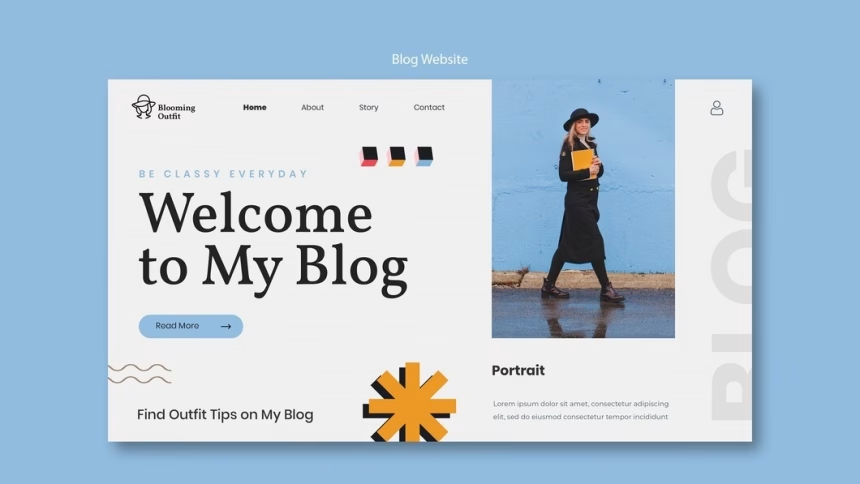Understanding how to improve blog readability is the secret to turning that fleeting glance into a captivated gaze. It’s not just about flawless grammar or proper punctuation—it’s about creating an experience that pulls readers in, holds their focus, and leaves them eager for more.
Readable blogs aren’t just easier to consume; they’re more impactful, helping you connect with your audience, build trust, and drive engagement.
In this guide, we’ll uncover proven strategies to improve blog readability, from mastering structure and formatting to optimizing for skimmability.
Whether you’re a seasoned blogger or just starting out, these tips will transform your content into something your readers can’t get enough of. Let’s dive in and make your blog a must-read.
Why to Improve Blog Readability Matters
Let me share something that changed my blogging journey forever. When I first started, my posts were getting decent traffic but had a bounce rate that would make any blogger cringe.
After implementing the strategies I’m about to share, my average time on page doubled, and my bounce rate dropped by 45%.
Essential Elements of Readable Content
1. Perfect Your Formatting Game 📝
The way you present your content is just as important as the content itself. Here’s what works:
- Use headers (H2, H3, H4) to create a clear content hierarchy
- Keep paragraphs short (2-3 sentences max)
- Utilize bullet points and numbered lists for easy scanning
- Include white space to prevent content overwhelm
Pro Tip: Think of your blog post as a conversation, not a college essay. Break up ideas naturally, just as you would in speech.
2. Master the Art of Sentence Structure
Remember these golden rules:
- Vary sentence length to maintain reader interest
- Start with shorter sentences in your introduction
- Use transition words to guide readers smoothly through your content
- Break up complex ideas into digestible chunks
3. Enhance Visual Appeal
- Choose readable fonts (I discovered this firsthand when a ‘creative’ font choice completely tanked my engagement)
- Maintain proper contrast between text and background
- Set comfortable line spacing (1.5 to 2 is optimal)
- Keep line length between 50-75 characters
4. Optimize for Scanners
Did you know that 79% of users scan rather than read word-by-word? Here’s how to cater to them to improve blog readability:
- Use descriptive subheadings
- Highlight key points in bold
- Include relevant images and infographics
- Create information-rich captions
5. Write in a Conversational Tone
Think of your blog as a friendly chat over coffee. I like to:
- Use contractions (they’re, you’ll, we’ve)
- Ask questions to engage readers
- Share personal experiences
- Address readers directly
6. Leverage Tools for Better Readability
Some of my favorite tools include to help improve blog readability:
- Hemingway Editor for clarity
- Grammarly for grammar and style
- Yoast SEO‘s readability checker
- Google Docs‘ built-in readability features
Advanced Tips for Pro Bloggers
- Use the Inverted Pyramid Style Start with the most important information and gradually move to supporting details.
- Implement Progressive Disclosure Reveal information gradually to avoid overwhelming readers.
- Create Clear Information Hierarchy Guide readers through your content with logical flow and clear sections.
- Optimize for Mobile Readers Test your content on multiple devices – what looks great on desktop might be unreadable on mobile.
Common Readability Mistakes to Avoid
- Dense paragraphs
- Inconsistent formatting
- Overuse of jargon
- Lack of visual breaks
- Poor mobile optimization
Measuring Your Blog’s Readability
Track these metrics:
- Average time on page
- Bounce rate
- Scroll depth
- Social shares
- Comment engagement
Quick Wins to Improve Blog Readability
- Add a table of contents for longer posts
- Break up existing paragraphs
- Insert relevant images
- Use descriptive subheadings
- Implement bulleted lists
FAQs
Q: What’s the ideal paragraph length for blog posts?
A: Aim for 2-3 sentences per paragraph to maintain reader engagement and prevent content fatigue.
Q: How do I know if my content is too complex?
A: Use readability tools like Hemingway Editor to check your content’s grade level. Aim for 6th-8th grade level for general audiences.
Q: Should I use different strategies for different types of content?
A: Yes! Technical content might require more detailed explanations, while lifestyle content can be more conversational.
Q: How often should I break up my content with subheadings?
A: Add a new subheading every 200-300 words to maintain structure and scannability.
Q: Does improving readability affect SEO?
A: Absolutely! Better readability leads to longer time on page and lower bounce rates, which are positive SEO signals.
Q: What’s the best font size for blog content?
A: 16-18px for body text on desktop, slightly larger for mobile devices.
Q: How can I make technical content more readable?
A: Use analogies, examples, and progressive disclosure to break down complex topics.
Q: Should I use images in every blog post?
A: Yes! Aim for an image every 300-500 words to break up text and illustrate key points.
Q: How do I maintain consistency in formatting?
A: Create a style guide for your blog and stick to it for all posts.
Q: What role does white space play in readability?
A: White space helps reduce cognitive load and makes content more digestible. Don’t be afraid to use it generously.








